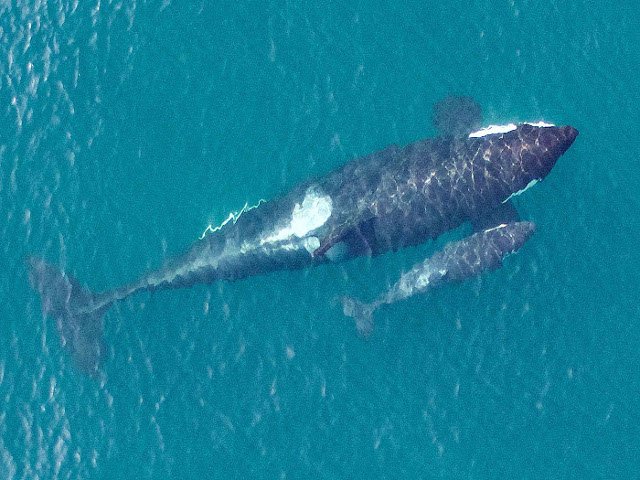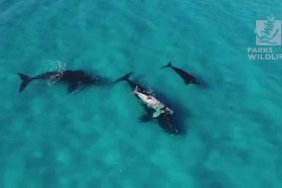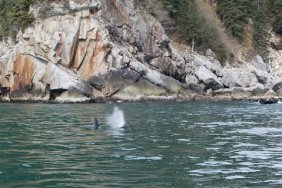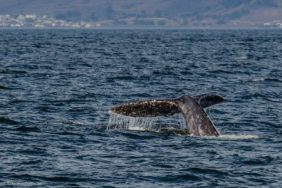There are only 81 Southern Resident orca whales in the wild, so when there are five new additions this year it’s a pretty big deal. Capturing them in some incredible photos is another amazing thing altogether.
In stunning photos shot from an aerial drone in the San Juan Islands outside Seattle, Washington, pods of killer whales were seen travelling in family groups with mothers nursing calves and fathers travelling alongside.
John Durban was one of the marine mammal biologists with NOAA Fisheries that helped capture these amazing images om collaboration with the Vancouver Aquarium. Not only are the images wonderful for people to enjoy, they also play a role in research, explained Durban in a podcast about the photos.
“We’re really answering a very simple question. Are these killer whales getting enough to eat?” Durban explained on the podcast. “Both these populations of killer whales are specialists in preying on salmon, particularly Chinook Salmon, and several stocks of Chinook Salmon are themselves endangered, which makes these whales vulnerable…”
Using the photos, biologists are able to take extremely accurate measurements of the size of the whales. While most of the orcas appeared in good health, some of the females appeared lean, possibly as a result of giving birth and weaning their calves.
In one shot an image shows a killer whale eating a salmon. In others you see a calf suckling for milk with some of the rich liquid trailing behind.
“It’s a great example of the kind of nurturing and close care that goes on between a mother and a calf,” Durban said.
In order to capture the images, the aerial drone stayed at least 90 feet above the animals in accordance with Federal Aviation Administration rules.
“It certainly is the first time we’ve seen it with this clarity,” Durban said. “Previous attempts to photograph from the air, we’ve been in manned aircraft, like helicopters, so we’ve been a lot higher, so we’re getting this kind of detail. So this is the first time we’ve seen this kind of behavior in this kind of clarity.
Photo credit: NOAA Fisheries
Aerial Whale Images
-
Overhead image of L122
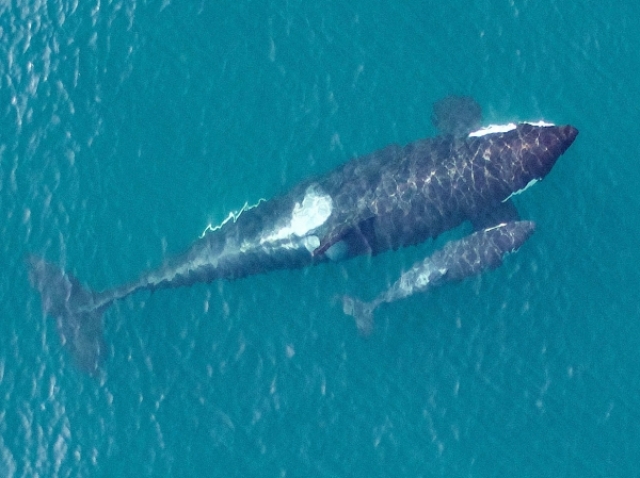
Overhead image of the newest member of the Southern Resident killer whale population, L122, just days after being born to first-time mother L91. This image shows the small size of neonate calves and the close bond between mother and calf that will last a lifetime. Credit: NOAA Fisheries, Vancouver Aquarium. Taken by UAV from above 90 feet under NMFS research permit and FAA flight authorization. More information at NOAA.gov
-
New mother L91 eating a salmon
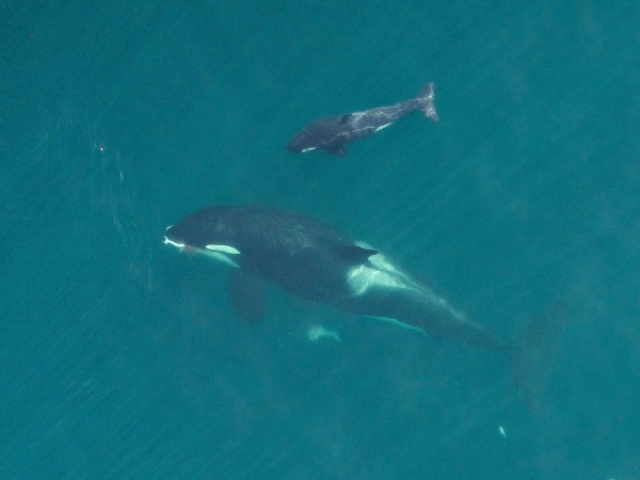
New mother L91 eating a salmon as her newborn calf looks on. This fish was caught and given to her by other members of the family group, showing that relatives help her as she cares for her calf. Image to be used for health assessment. Credit: NOAA Fisheries, Vancouver Aquarium. Taken by UAV from above 90 feet under NMFS research permit and FAA flight authorization. More information at NOAA.gov.
-
An adult female
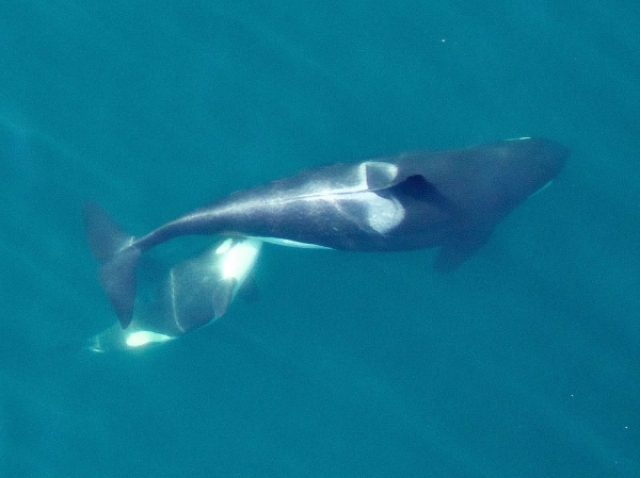
An adult female Southern Resident killer whale (L94) nursing her calf. Lactation is energetically costly for these whales, and future photogrammetry images of the calf’s growth and the mother’s condition will reveal if the mother is getting enough food to support both herself and the calf. Note the distinctive saddle patch on the mother. This allows scientists to recognize individual whales in photographs. Credit: NOAA Fisheries, Vancouver Aquarium. Taken by UAV from above 90 feet under NMFS research permit and FAA flight authorization. More information at NOAA.gov.
-
Another image of I51
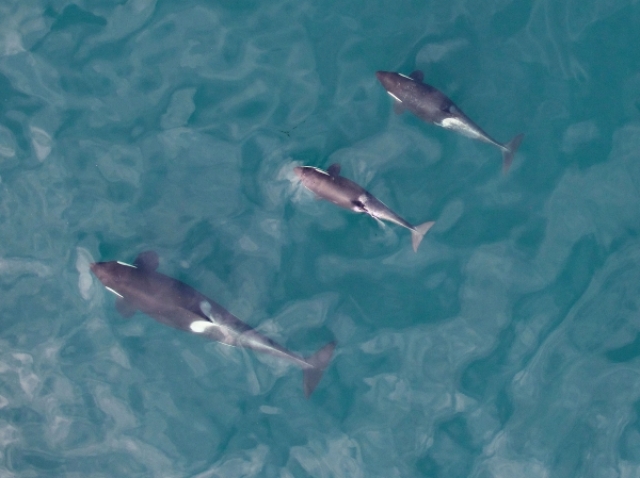
Another image of I51 and her two offspring, this one taken in 2015. Comparing this image to the one taken the year before, one can see that the youngest calf (I144) has lost its gray mottling and grown considerably. It is now almost half the length of its mother and approaching the length of its older sibling (I129). These images show how scientists can track the growth of individual whales across time to monitor their health and condition. Credit: NOAA Fisheries, Vancouver Aquarium. Taken by UAV from above 90 feet under Fisheries and Oceans Canada research permit and Transport Canada flight authorization. More information at NOAA.gov.
-
Adult female with calf
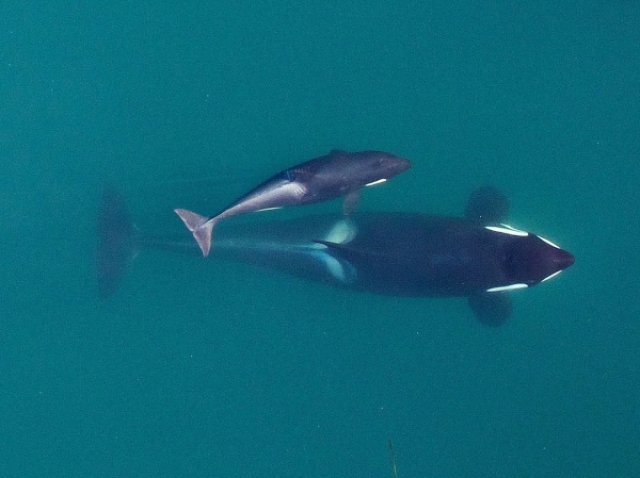
Photogrammetry image of an adult female Southern Resident (J16) as she’s about to surface with her youngest calf, born earlier this year, alongside. Future photogrammetry will allow scientists to monitor the growth of the calf and condition of the mother to ensure they are getting an adequate food supply. Credit: NOAA Fisheries, Vancouver Aquarium. Taken by UAV from above 90 feet under NMFS research permit and FAA flight authorization. More information at NOAA.gov.
-
The A42 family group
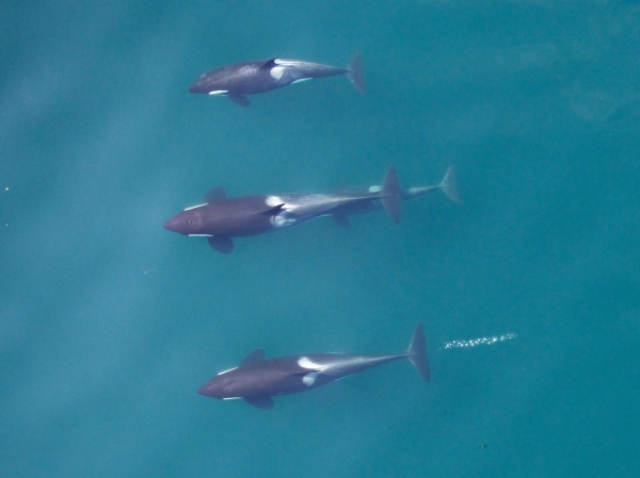
Photogrammetry image the A42 family group of Northern residents. Killer whales travel in their matrilineal family group their entire lives. Here the matriarch A42 is in the middle with her newest calf beneath her. Note A42’s distinctive saddle patch. This allows scientists to recognize individual whales from the photographs and assess their health. Credit: NOAA Fisheries, Vancouver Aquarium. Taken by UAV from above 90 feet under Fisheries and Oceans Canada research permit and Transport Canada flight authorization. More information at NOAA.gov.
-
Aadult female with offspring
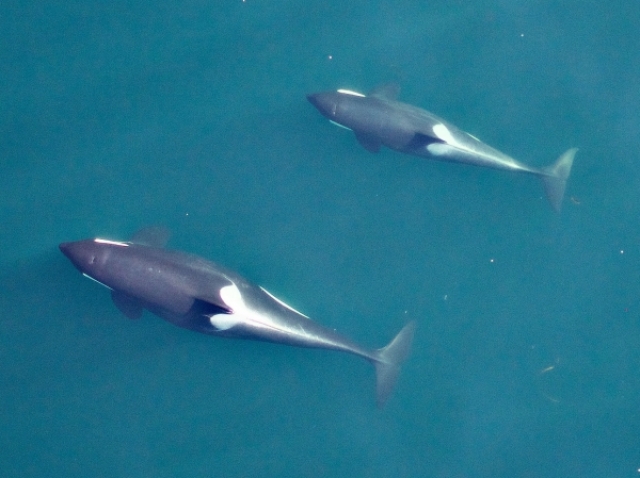
Photogrammetry image of an adult female Southern Resident killer whale (J28) traveling with her juvenile offspring (J46). This image reveals the wide body profile of the mother, indicating that she is likely pregnant and due to have a second calf in the coming months. Credit: NOAA Fisheries, Vancouver Aquarium. Taken by UAV from above 90 feet under NMFS research permit and FAA flight authorization. More information at NOAA.gov.
-
Adult male
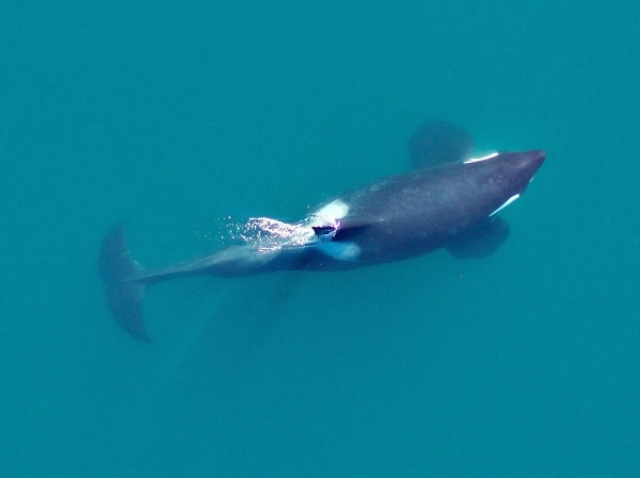
Photogrammetry image of an adult male Southern Resident killer whale (L41). This photo shows the tall dorsal fin, curved flukes, and large pectoral fins characteristic of adult males. Images to be used for health assessment. Credit: NOAA Fisheries, Vancouver Aquarium. Taken by UAV from above 90 feet under NMFS research permit and FAA flight authorization. More information at NOAA.gov.
-
Adult male
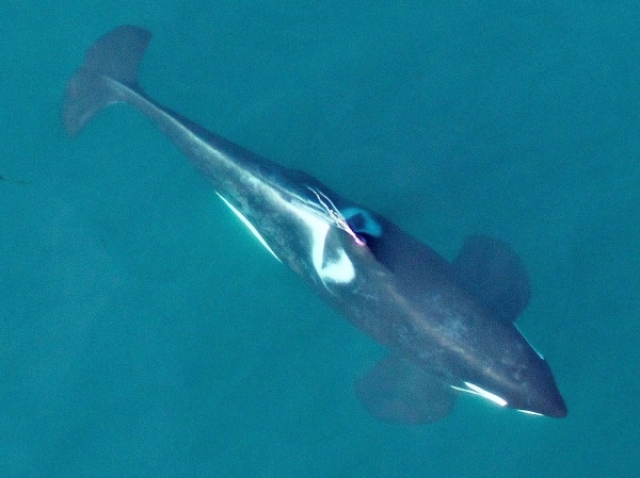
Photogrammetry image of an adult male Southern Resident killer whale (K21). These images are being used to measure growth and body condition of whales that can be individually recognized from the distinctive pigmentation of their gray saddle patches, which allows scientists to monitor their health. Credit: NOAA Fisheries, Vancouver Aquarium. Taken by UAV from above 90 feet under NMFS research permit and FAA flight authorization. More information at NOAA.gov.
-
Entire I16 matriline
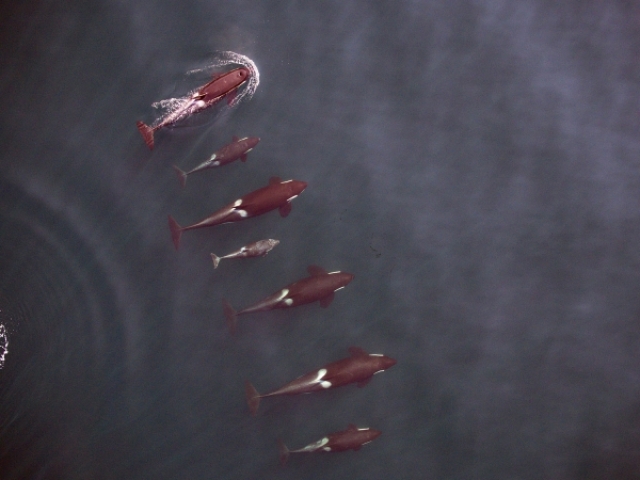
A photogrammetry image of the entire I16 matriline of Northern Resident killer whales taken in 2014. This image shows the size of whales at different ages. Note the small, gray calf in the middle (I144), only a few months old, swimming to the right of its mother (I51). To the left of the mother is the calf’s older sibling (I129). Images to be used for health assessment. Credit: NOAA Fisheries, Vancouver Aquarium. Taken by UAV from above 90 feet under Fisheries and Oceans Canada research permit and Transport Canada flight authorization. More information at NOAA.gov.
-
Piloting the hexacopter
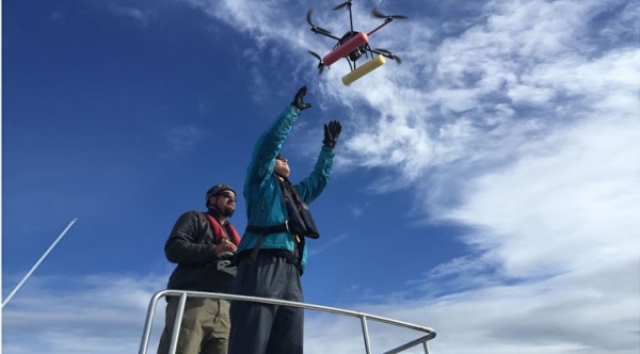
Dr. John Durban piloting the hexacopter into the hands of co-pilot Dr. Holly Fearnbach; both biologists with NOAA’s Southwest Fisheries Science Center. Credit: NOAA
